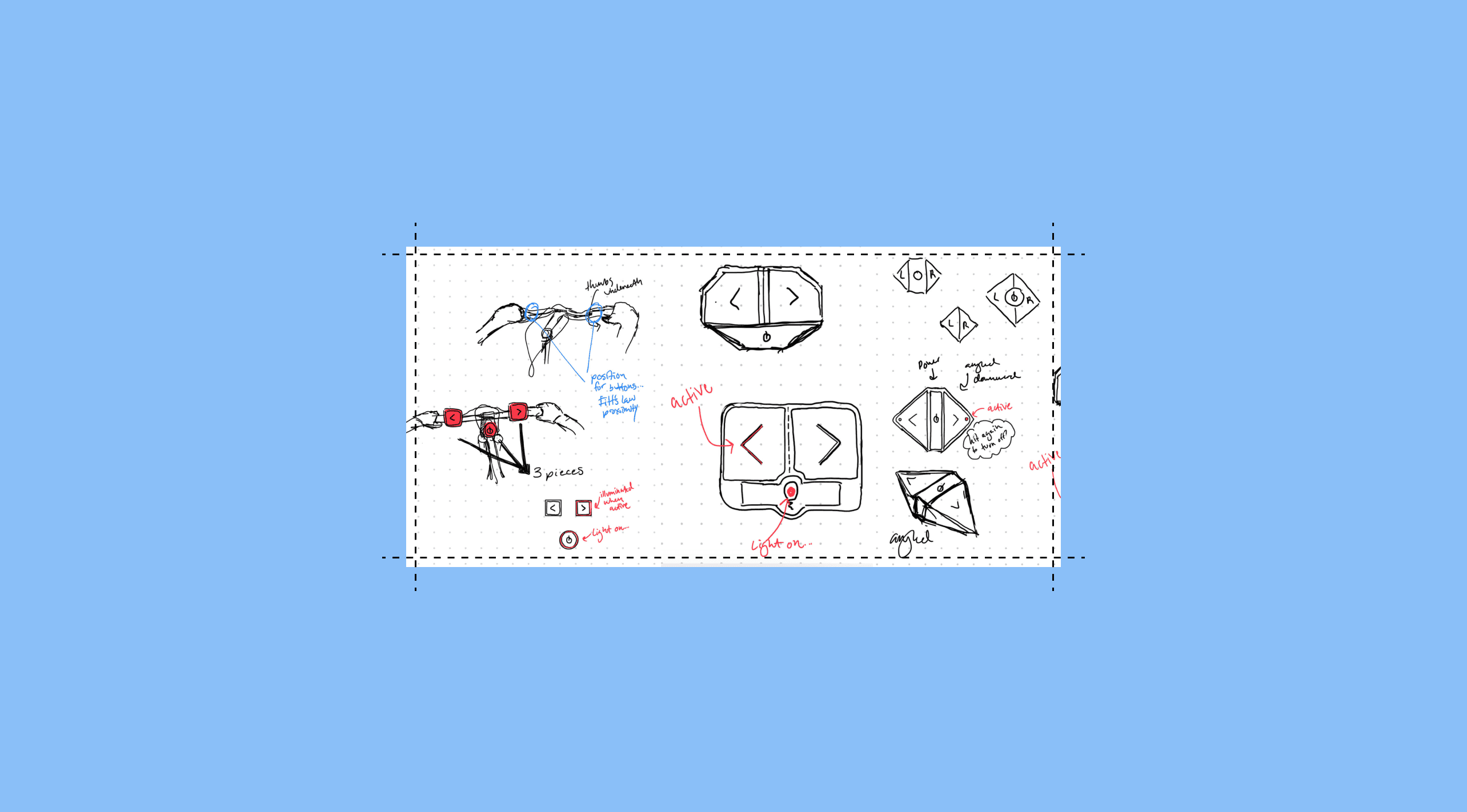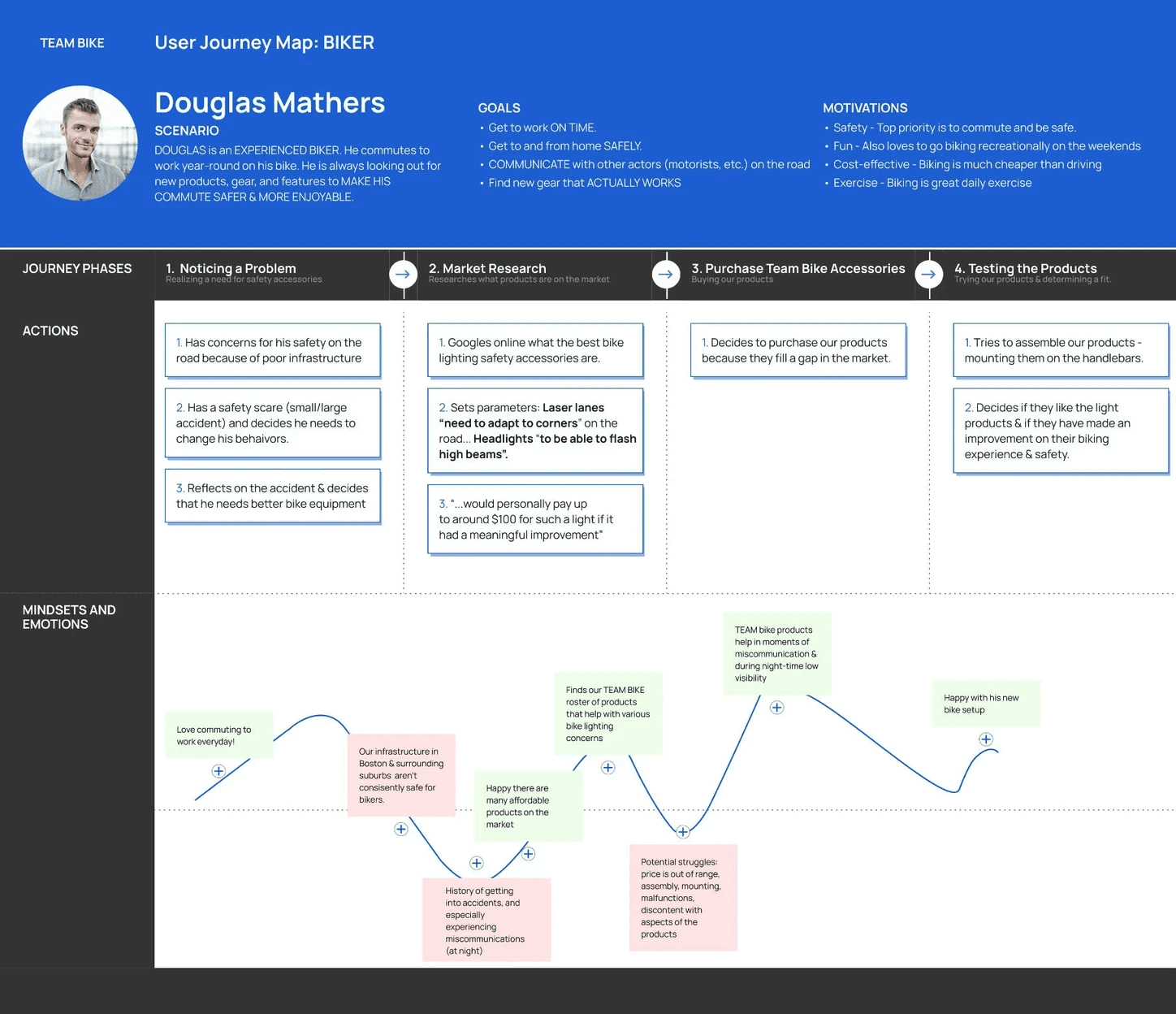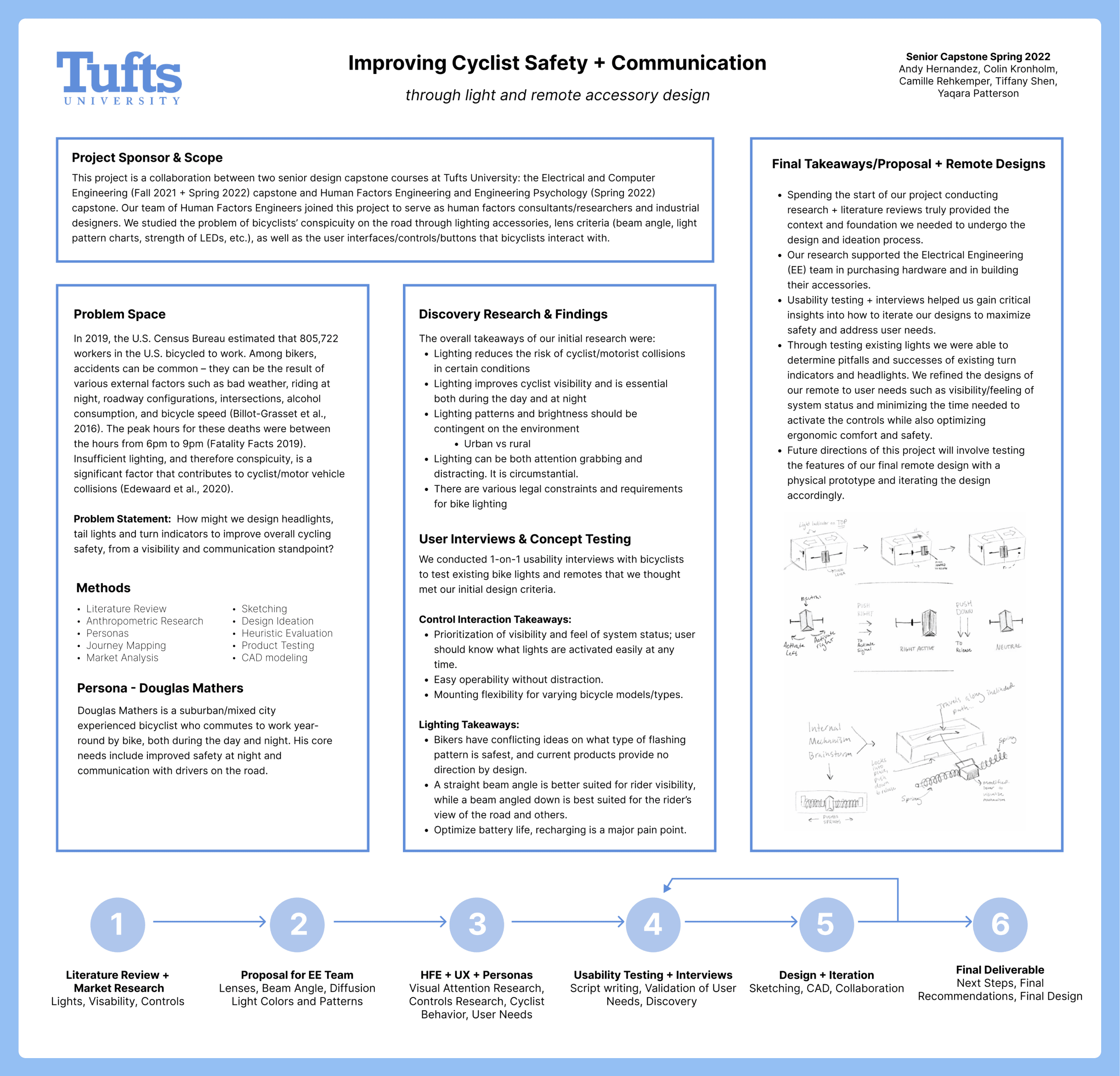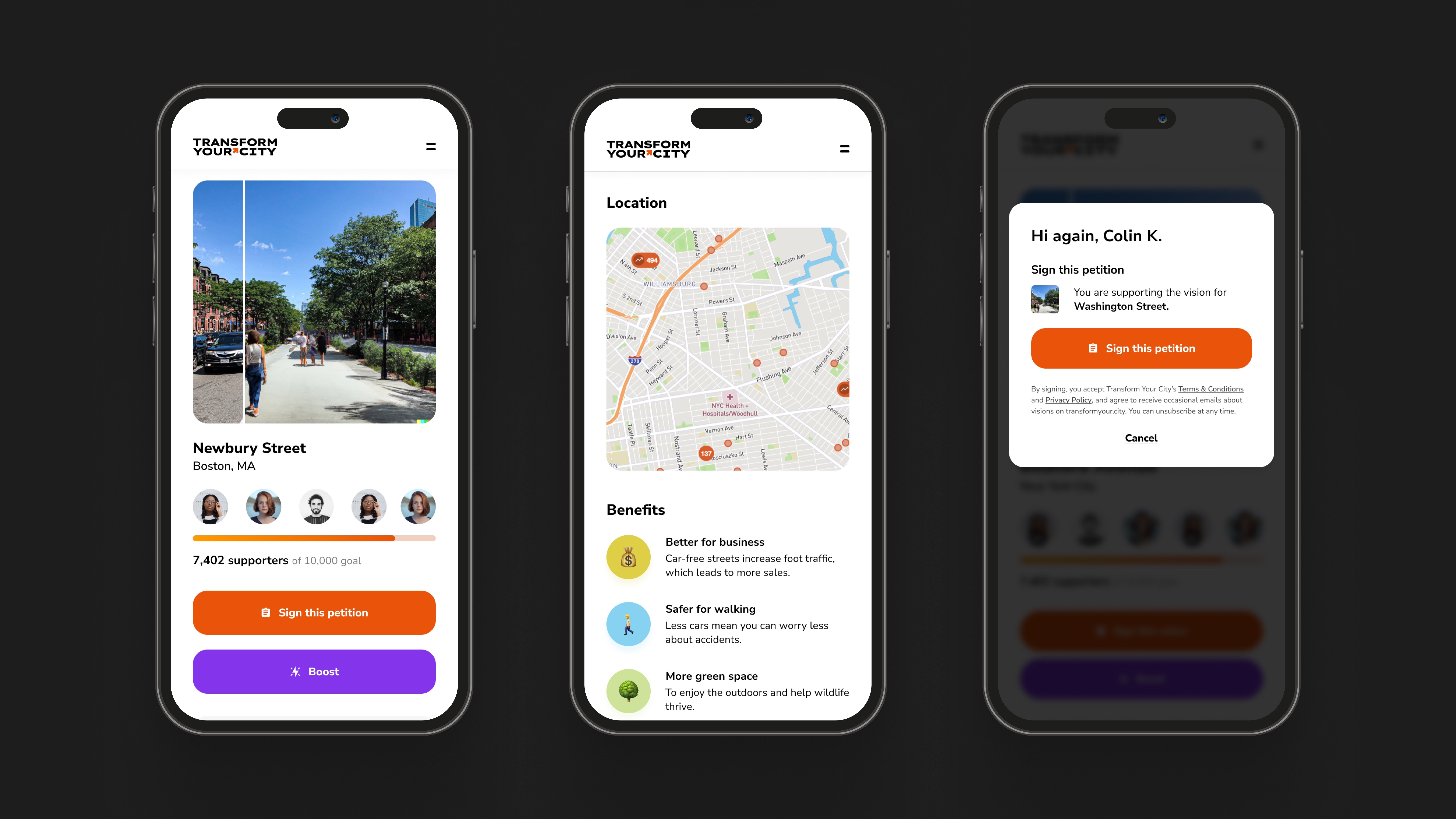In most of North America, cyclists are especially vulnerable road users. Between 6pm and 9pm on average, cyclists' fatalities peak, signaling that insufficient lighting may be a significant factor in collisions (NHSTA).
For my senior capstone at Tufts University, I worked on a team of human factors engineers alongside a team of electrical engineers to enhance cyclists' safety. While the electrical engineers crafted physical prototypes, my team conducted research and testing to determine how to best design lighting products to improve cyclists' safety.
Through a literature review, we provided recommendations to the electrical engineers, covering headlights, taillights, turn signals, and laser-projected bike lanes. We suggested specific lighting lenses, hardware, and optimal flashing sequences for visibility. We also created sketches and 3D renderings of user-friendly turn signal remotes. We conducted usability tests on popular bike lighting products, yielding insights into the strengths and weaknesses of the current market.
Beyond contributing to the literature review, my work centered around the user’s journey: creating personas, mapping journeys, synthesizing user interview insights, and usability testing various bike headlights and taillights with participants.
Credits:
Tiffany Shen
Andrés Hernández
Yaqara Patterson
Colin Kronholm
Camille Rehkemper
Personas
We created four personas, based on 30+ user interviews. With quotes and input from participants, we could anticipate and design for users' needs.
Journey Maps
By journey mapping, we could better understand users' motivations, goals, and product needs.
3D Animations
For the turn signal remote, we created a 3D prototype animation. The product would rest on the handlebars, allowing cyclists to signal with just their thumbs and receive constant visual feedback.
Presentation
We summarized our capstone project into a succinct poster and shared our findings with the class through a presentation.
Conclusion
This project culminated my degree in Engineering Psychology. As someone who loves commuting by bicycle, I was thrilled to work on this project, chat with cyclists, and test lighting products with participants.
I enjoyed working with physical products because it helped me expand my horizons beyond digital.
Ultimately, we were able to provide the electrical engineers with a litany of human factors recommendations, which they used to purchase lenses and other equipment. We also provided insights into comparable products through usability testing. Lastly, we designed a remote control for the turn-signal device that balanced ease-of-use with ergonomic comfort, safety, and visual feedback.
If we had more time with this project, I would have wanted to conduct usability testing with the electrical engineers' prototypes to determine how their products compared to the existing bike accessories that we tested.
MORE WORK
EXPLORE MORE PROJECTS
kronholmcolin@gmail.com
Los Angeles, California
Colin Kronholm © 2024





